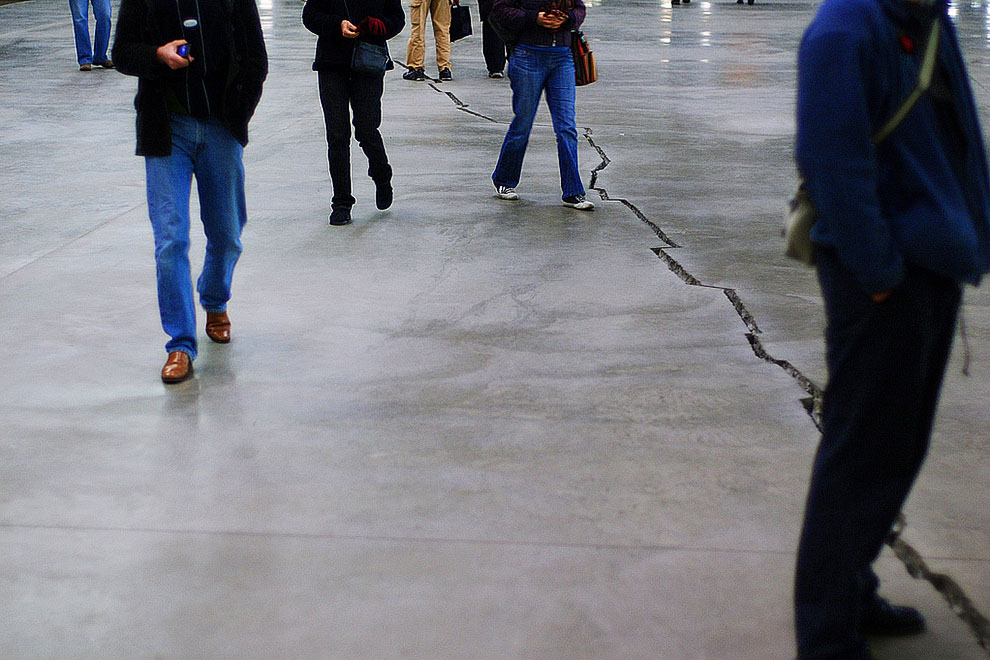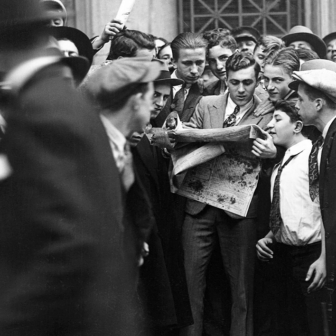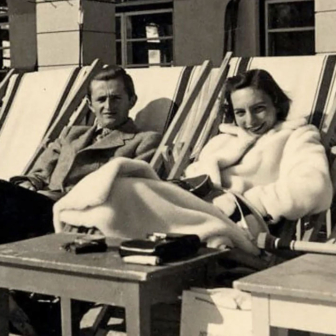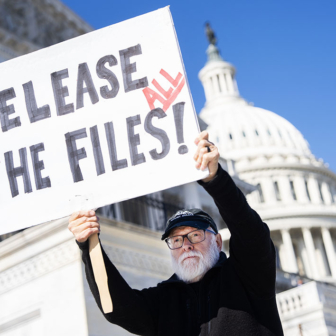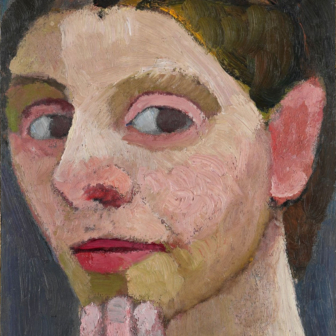Number 11: Or Tales That Witness Madness
By Jonathan Coe | Penguin | $49.99
In the early months of 2001, after I’d spent a year in London devoted to a new media project with uncertain prospects, couchsurfing each night or staying in a cheap hotel, a colleague off to teach a semester in the United States kindly offered me a spell housesitting the home he shared with his wife in North Kensington.
My late Sunday arrival, a day after their departure, was bewildering. In the relief of finding the right house on an unfamiliar street, an ajar front door barely registered. Even the room off the corridor, a scene of utter disarray, didn’t do it. Noting two drawers wrenched off their runners, my absurd thought was of a frantic last-minute search for a passport. Only when a nervous walk upstairs led to a smashed door lock did reality bite.
I called the police. A young constable appeared almost instantly; in her wake, a neighbour from across the road. Both were solicitous. Forms were filled, help offered. I left a message with the couple’s daughter. Soon – all too soon – things were quiet again.
Although the damage and its cost would fall on my hosts, it left me unsettled. At last, the week’s work ended, Saturday morning brought a first chance to breathe, to “light out for the territory.” Nearby White City, the BBC’s west London HQ, was an early landmark, followed by the shopping hub of Shepherd’s Bush Green, though the streets were still quiet. A girl, around seventeen, perhaps of Indian origin, walking lightly by, with smiling self-possession, wearing jeans and a hooped blue-and-white sports shirt.
Why was that sight so uplifting, and so enduring in the memory? Decoding the shirt at least was easy. This corner of London is the heartland of the Queens Park Rangers; there must have been a home match at Loftus Road that day. A cousin of mine, brought up in this area, had followed the soccer club even when he was exiled in Birmingham, England’s “second city” in the west midlands, for most of his working life. One thing led to another, and my thoughts turned to an event that looms large in Birmingham’s modern history, the bombing of two pubs by the Irish Republican Army, or IRA, which killed twenty-one people in November 1974.
By coincidence, one of the characters in the new novel I had just finished reading, Jonathan Coe’s The Rotters’ Club, had lost her fiancé in those very blasts. The author had been on a BBC radio program days earlier, and I recalled his acute observation that the 1970s were “the decade before irony,” when people had not yet learned to adopt a pose, to hold their beliefs as if from an ironic distance, and that this made the period imaginatively hard to grasp.
At some level I was aware of myself, meandering and musing, a free man in London with no appointment to keep, and had a vague sensation of bliss. But mostly I was just inside the moment, going with the flow of Coe’s absorbing idea.
Just past the Green I stopped at a pedestrian crossing and waited for the lights to change. A man was standing on the other side. I looked at him. It was Jonathan Coe.
At that moment I learned the meaning of “psychogeography.”
Jonathan Coe’s eleventh novel, Number 11, has an ex-librarian circuiting Birmingham on a number 11 bus in order to save on domestic heating bills, a Kazakh former model building a vast basement extension under a South Kensington mansion that reaches to an eleventh floor, a film historian dying under the collapsed junk of the number 11 cupboard in a Leipzig warehouse, a police detective linking murder victims by their presence at a party held in the chancellor’s official residence at 11 Downing Street, an enigmatic artist who… but you get the picture.
The book also features new members of the nefarious Winshaw family, whose earlier incarnations were killed off in What a Carve Up!, Coe’s bountiful satire of Thatcherism, published in 1994, four years after the lady’s own defenestration. Two more Winshaws, as well as several associates of the protean clan, are dispatched in the course of Number 11. And just as What a Carve Up! takes its title from a comedy-horror film of 1961, the climatic episode of Number 11 borrows its name from What a Whopper, a Loch Ness monster lark also made in 1961 (now garnished, for congruity’s sake, with a “!”). But look out! For before his fatal encounter the historian has jotted an article idea: “Sequels which are not really sequels. Sequels where the relationship to the original is oblique, slippery.”
There’s much else in this complaisant vein. Jonathan Coe leaves no dot unjoined, no conceit unlaboured. Its design-by-number suggests a book crafted for fans (including that sub-category, literary academics) as well as mere readers, if the distinction can be sustained. A moment’s check, for example, confirmed the depressing intuition that Leipzig just had to be Germany’s eleventh-largest city. Such are the joys in store for those who relish that sort of thing.
More troubling to those outside the closed circle (as another disappointing Coe sequel was called) is how far and awkwardly the authorial calculus obtrudes. A trial-by-tabloid target brings to life the vintage stereotype “black, one-legged lesbian on benefits.” The detective’s young sidekick uses a London Review of Books article by James Meek to decouple a “bedroom tax” mystery and draws on “the modish discipline of psychogeography (as pioneered by Guy Debord, and practised in the present day by the likes of Patrick Keiller, Iain Sinclair and Will Self)” to skewer a case of indecent exposure. His proposition that “to solve an English crime… one must contemplate the condition of England itself” leads colleagues to dub him “Nate of the Station.”
It would be easy to say that Coe’s playfulness risks seeing the novel evaporate in self-referential whimsy: the postmodernist’s catch-11. But the construction-puzzle road to Nathan Pilbeam’s nickname or Alison Doubleday’s humiliation hints at something more complicated: namely that the book’s various registers – modern gothic, social satire, political lament – fail to gel, because its aesthetic intentions are from the outset stuck in a web spun from baser materials.
Every review of Number 11 refers to it as a “state of the nation” work. In truth, “state of two nations” would be more accurate. The idea of “two nations” is associated with Benjamin Disraeli, who as a Tory politician in the 1840s used it as the subtitle of Sybil, the second of a trilogy of novels favouring social reform. Disraeli’s evocation of the vast gulf between England’s rich and poor, “as ignorant of each other’s habits, thoughts, and feelings, as if they were… inhabitants of different planets” has long become a reflex shorthand across the political spectrum, its frequency of citation a signal that inequality and poverty are lapping at the gates.
The damage being wrought by these forces to individual lives and shared interests propels Number 11. The calculus here is a moral one, as five self-contained but gradually associative sections track many characters across a landscape of social division and its everyday dramas of loss, greed, anomie and waste. The latter unfold against the excesses, hypocrisies and scandals of the current order (media bullying and neutered dissent, extreme wealth and punitive austerity, financial deceit and political corruption, the “monetisation of wonder”). As the narratives chime, and the eerie premonitions of the book’s early pages acquire new intensity, these dramas reveal themselves as the manifestation of a deeper force consuming the foundations of contemporary London.
Coe’s Tales That Witness Madness (the book’s subtitle – another horror film, from 1973) curve across middle England, from Beverley to Birmingham and Oxford, with brief forays to South Africa and Switzerland. But the topical edge lies in the capital. London is depicted as a playground of the megarich, their whims (travel, children’s tuition, dog walking, those basements) catered to by a transient service class of immigrants and native graduates, of whom Rachel, the book’s principal character, is one. (Coe says that the book began with walking along Chelsea’s Tregunter Road “and seeing what passes for doing your house up round there, which… involves bulldozers, cranes and closing off streets for months.”)
This polarised city, moreover, crystallises the destructive intent of the Conservative government: persecuting the poor, corroding the public realm, destroying the remnants of a shared moral order. Prominent instances are the spread of food banks and the closure of public libraries. The social gulf, however, is as much ethical-political as strictly material. Rachel is an Oxford graduate whose mother is a barrister (representing whistleblowers), tutor friend Laura a literary scholar, and boyfriend a PhD film student. “We are all in this together” – the brazen promise of George Osborne before he entered 11 Downing Street as chancellor in 2010, which frames the “What a Whopper!” chapter – is a lie. In reality, the governing elite is a malicious and zealotic force, glad agency of the sinister Winshaw power-mesh that envelops England.
It’s a powerful indictment, which also relies heavily on Tony Blair for dramatic effect. Blair’s quote above the opening tale (“In another part of our globe, there is shadow and darkness”) is from a Washington speech made on the same day, 17 July 2003, as the death in an Oxfordshire wood of the weapons scientist David Kelly, who had been drawn into political-media disputes over the Iraq war. Rachel carries the childhood memory of her grandparents’ reaction to Kelly’s demise (“Britain would be a different place from now on: unquiet, haunted”) and bonds over it with Laura. Here, the determinism always central to Coe’s use of recent political history is at its most overt. The filter of the Winshaw saga renders modern British governance a giant conspiracy, and the country a horror story. But if reality is also conspiracy and horror, what need for fiction of this kind? Or indeed for politics?
The book is wide but shallow. A self-contained yarn about the serial murder of political stand-ups that climaxes at a best-of-all-awards ceremony – “The Winshaw Prize / or, / Nathan Pilbeam’s Breakthrough Case / A ‘Nate of the Station’ Story” – is a showcase for Coe’s theorist policeman. It also permits Coe to recycle his offline interest in the frivolousness of “anti-establishment comedy,” sketch the profane cynicism of a famous right-wing newspaper editor, and recall the scandal of Birmingham’s new library.
The theme echoes Coe’s 2013 essay on British satire, which also examined public indulgence of London mayor Boris Johnson’s image as a “lovable, self-mocking buffoon.” That London Review of Books piece got stuck in a patronising binary: “If we are chuckling at [Johnson], we are not likely to be thinking too hard about his doggedly neoliberal and pro-City agenda, let alone doing anything to counter it.”
In Number 11, the fictive treatment goes no deeper. An angry blogger aims at “middle-class liberal-left comedians” because they squander radical energy; the editor-ogre seeks to “co-opt” a stand-up under imminent threat; PC Pilbeam, armed with “the history and theory of comedy,” solves the case. The cartoonishness fails to rise above its putative targets and thus to illuminate them. What the Observer’s Nick Cohen calls Coe’s “postmodern back-covering” works against his own purposes.
But what are these purposes? The heart of the problem is that the work’s aesthetics and politics are discordant. The result is didacticism, which seems to elicit responses from the same cloth. The outline of two arrived in my mind fully formed. From the attack-dog right: “Iraq – check. Reality TV – check. Social media – check. Inequality – check. Tax evasion – check. Health rationing– check. Educational apartheid – check. Arms profiteering – check. Housing crisis – check. Tabloid journalism – check. Immigrants – check. Tory scum – check. All the ingredients of political injustice and righteous anger are there. A pity the author forgot to turn his cooker on.”
From the hip-gunslinger left: “These moving tales of pinched lives and broken dreams, crushed in the inexorable maw of a system out of control, form a savage portrait of Britain’s bleak wasteland of neoliberal misery. The novel unravels the heart of an economically razed, socially cleaved, and ethically decayed country. The bloated chicanery of our real-life Winshaws is exposed more devastatingly than any mere polemic could achieve.”
The truth in such deadening formulae is that Jonathan Coe has reversed George Orwell’s self-injunction “to make political writing into an art.” The surrender of imagination is nowhere more apparent than in how closely, across these tales, personality and social-political outlook are aligned. The exception is Rachel’s kindly grandparents, Conservatives from another age whose role is to accentuate the pitilessness of this one. Which in its way proves the rule.
In a revealing interview with the Financial Times during a country walk near his Birmingham childhood home (where his mother has lived for fifty-nine years), Coe says, “I’m a very nostalgic person and I had a very happy childhood, so I’m very attached to this whole area… These hills represent family to me.” It’s arguable that the nostalgia extends to his own work. The epigraph to Number 11 is a passage from What a Carve Up! that contains the line “there comes a point, where greed and madness become practically indistinguishable.” Laura’s late husband Roger (he of the Leipzig accident) is clearly a surrogate for Coe, down to the birthdate, obsessiveness, cinephilia and conviction – in his widow’s words – “that life was better, simpler, easier in the past.”
A minor detail here is that Roger has died within the last five years, since the couple’s son is that age; that would make him forty-six at Harry’s birth (the relevant action takes place in 2012). Laura’s age goes unmentioned, though she appears to be an early career academic and feels little older than Rachel herself, who is nineteen that year. Alfred Hitchcock didn’t hang about when flitting across the screen of his own films. Roger and his blasted, beloved past weigh far too heavy for the novel’s good.
A paradoxical feature of British declinism, left and right versions alike, is that it forever needs fresh sources to tap. Incessant cultural cannibalisation of the past encourages the search. There is no event or period that can’t be turned to partisan appropriation, held up to show how far the country has fallen. The left, in part because of its greater experience of defeat, has long pulled well ahead in these stakes. With few exceptions, the outcome is tawdry stories and reductive artefacts, suffused by bad faith. Ken Loach’s film The Spirit of 1945 is the brass standard for chutzpah, but the examples are legion.
The animating spirit of Number 11 is angry nostalgia. This very emotion seized hold of the Labour Party leadership in September 2015 following a second election defeat. It is also the most retrograde force in British politics, a guarantee, inter alia, of Conservative governments forever. It’s little wonder that Jonathan Coe has offered “two cheers” for Jeremy Corbyn, one of many warm endorsements from the worlds of art and literature. The new psychopolitics is melodramatic. It loves the grand sweep and lurid image. But looking back, down and up, it forgets to look at.
The alliance between the angry nostalgics’ hard core and their fellow travellers is on a roll, and has some way to go. A novel should be read and judged on its own terms. But where politics is concerned one thing is clear. Britain will be reborn on the day the last Corbynite is knocked out with the last copy of Number 11. •
